
Roots
The delicate ecosystem of our scalp, often an afterthought in the grand narrative of hair care, whispers tales of comfort and unease. It is a sensitive landscape, a vibrant foundation from which our strands ascend, yet it remains vulnerable to the constant interplay of environmental factors and the materials that touch it. Understanding what truly soothes this foundational space, what offers a gentle embrace rather than a subtle abrasion, begins with a deep exploration of fibers. This exploration extends beyond mere tactile sensation, delving into the very structure of materials and their ancient connection to human well-being.
Across civilizations, humans have sought materials that offer protection and comfort. From the earliest wraps of spun fibers to the sophisticated textiles of today, the choice of material has always held significance for scalp health. The quest for the softest material for sensitive scalps is a journey into the heart of fiber science, historical practice, and individual experience. It is a consideration of how different natural fibers, with their unique properties, interact with the skin’s inherent balance, offering a sanctuary of softness.
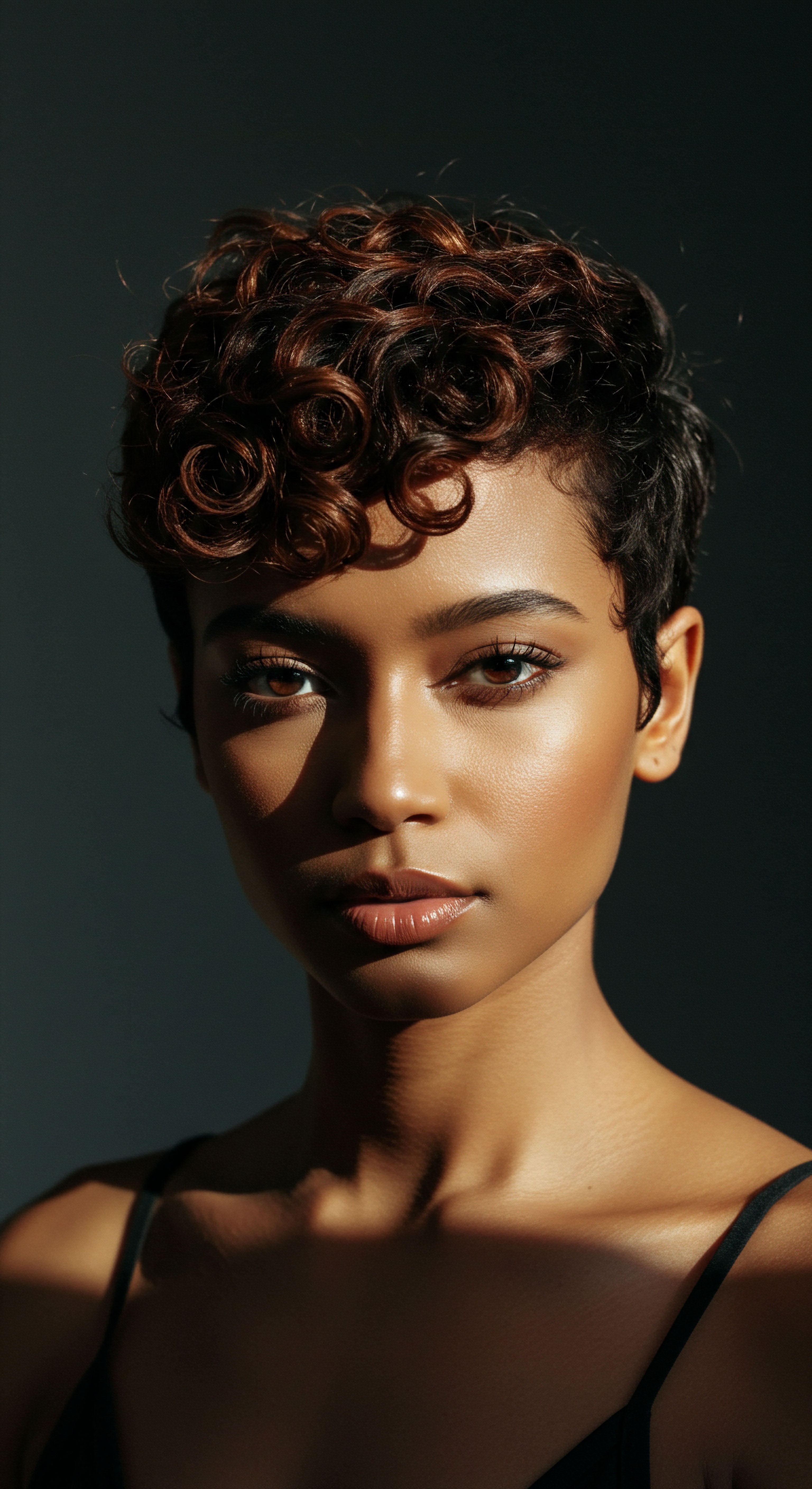
What Defines a Gentle Fiber for Scalp Contact?
The notion of “softness” for a sensitive scalp extends beyond a simple plush feel. It encompasses a constellation of characteristics that collectively contribute to minimizing irritation and fostering a healthy environment. A truly gentle fiber exhibits properties that respect the scalp’s delicate barrier, its thermal regulation, and its microbial harmony.
- Fiber Structure ❉ The microscopic architecture of a fiber dictates its surface smoothness. Fibers with naturally rounded, smooth surfaces, lacking sharp edges or scales, will glide against the skin with minimal friction, reducing the likelihood of micro-abrasions and irritation.
- Breathability ❉ A material’s capacity to allow air circulation is paramount. Trapped heat and moisture create a breeding ground for bacteria and yeast, potentially exacerbating conditions like dandruff or folliculitis. Highly breathable fibers permit the scalp to maintain its natural temperature and moisture balance.
- Moisture Management ❉ This involves both absorbency and wicking capabilities. While some moisture absorption is beneficial for managing sweat, a material that becomes overly saturated and remains damp can promote irritation. Ideal fibers manage moisture effectively, drawing it away from the scalp without stripping essential oils.
- Hypoallergenic Properties ❉ The inherent composition of the fiber, and the absence of harsh chemical treatments during its processing, contribute to its hypoallergenic nature. Materials less likely to trigger allergic reactions or contact dermatitis are paramount for sensitive individuals.
The historical narrative of head coverings, spanning cultures and continents, often highlights the intuitive selection of fibers that met these criteria. Ancient Egyptians, for instance, used linen for its breathability in warm climates. Across various traditions, materials that offered a blend of protection and gentle interaction with the hair and scalp were consistently favored.
A truly gentle fiber respects the scalp’s delicate barrier, minimizing friction and fostering an environment of comfort.
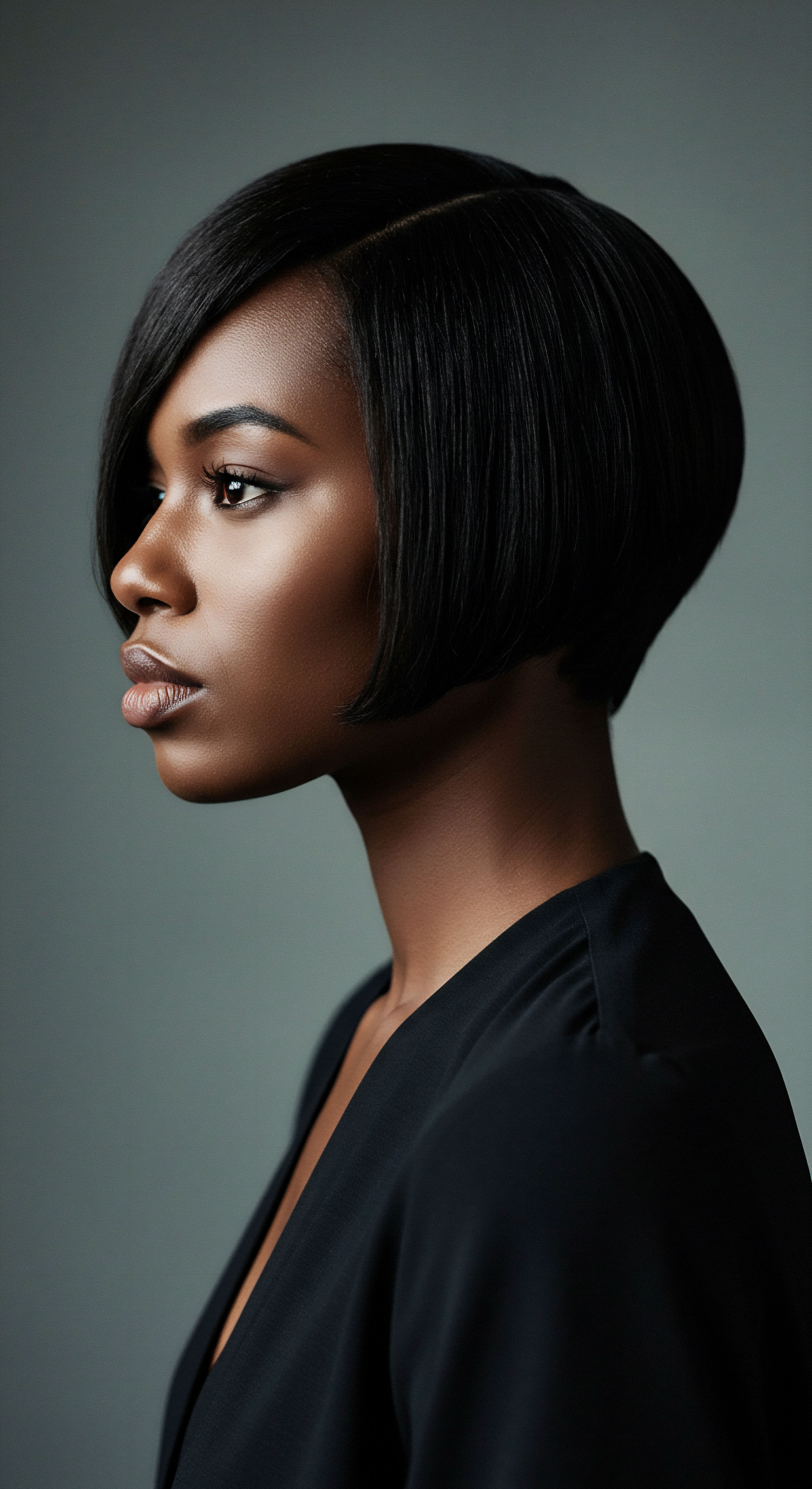
The Natural Fiber Pantheon for Scalp Serenity
Within the realm of natural fibers, several stand out as beacons of comfort for sensitive scalps. Their intrinsic qualities, honed by nature, offer a softness that synthetic counterparts often strive to replicate, sometimes falling short of the nuanced interplay with human biology.

Silk The Gentle Whisper
Silk, often lauded as the epitome of luxury, is perhaps the most celebrated material for sensitive skin and hair. Its protein structure, composed primarily of fibroin and sericin, is remarkably smooth and possesses a natural luster. This inherent smoothness translates to exceptionally low friction against the scalp and hair strands, which can significantly reduce mechanical irritation and breakage.
Studies have shown that silk’s proteins, particularly sericin, offer benefits such as moisture retention, anti-inflammatory, and even antimicrobial effects, contributing to a healthier scalp environment. Its ability to maintain hydration levels on the skin surface is also a key advantage for a sensitive scalp, preventing dryness that can lead to itching and flaking.
The history of silk, originating in ancient China, is a testament to its enduring appeal and perceived benefits. Reserved for royalty and high dignitaries for millennia, its widespread adoption in hair care products and accessories today speaks to its scientifically validated advantages.
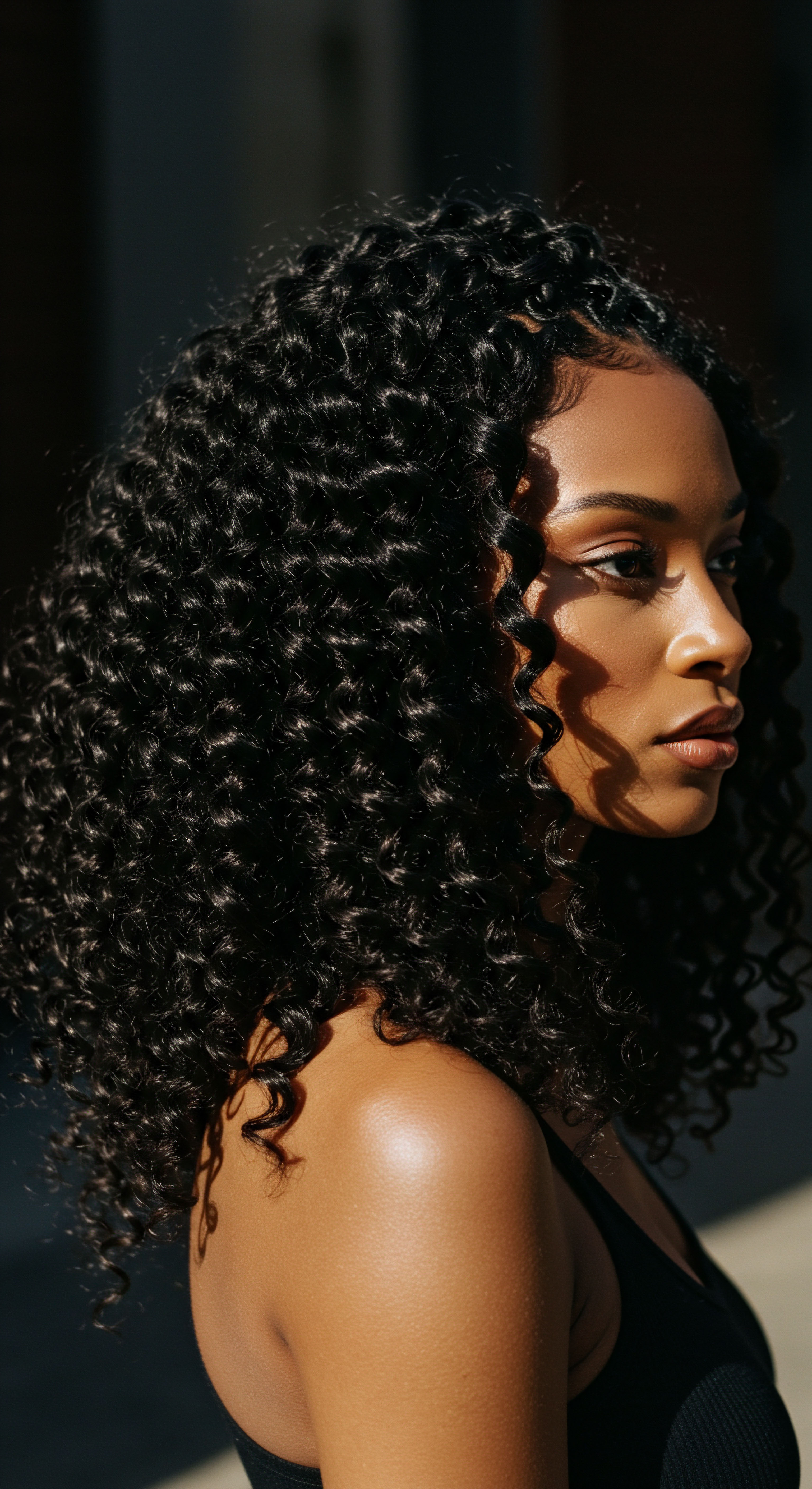
Bamboo A Breath of Fresh Air
Bamboo fabric, often processed into bamboo viscose or lyocell, has garnered significant attention for its remarkable properties that render it exceptionally gentle for sensitive scalps. The fibers themselves are naturally round and smooth, contributing to a silky texture that glides over the skin with minimal drag. This inherent smoothness reduces friction, a common culprit behind scalp irritation and hair damage.
Beyond its tactile qualities, bamboo possesses natural antimicrobial properties due to a bio-agent called “bamboo kun,” which remains present even after processing. Research has indicated that bamboo fabrics can reduce bacterial presence significantly, a critical factor for maintaining a healthy scalp microbiome and preventing issues like dandruff or itchiness. Furthermore, bamboo is highly breathable and boasts superior moisture-wicking capabilities, absorbing up to 40% more moisture than cotton, thereby keeping the scalp drier and more comfortable. This combination of low friction, antimicrobial action, and excellent moisture management makes bamboo a compelling choice for sensitive scalps.
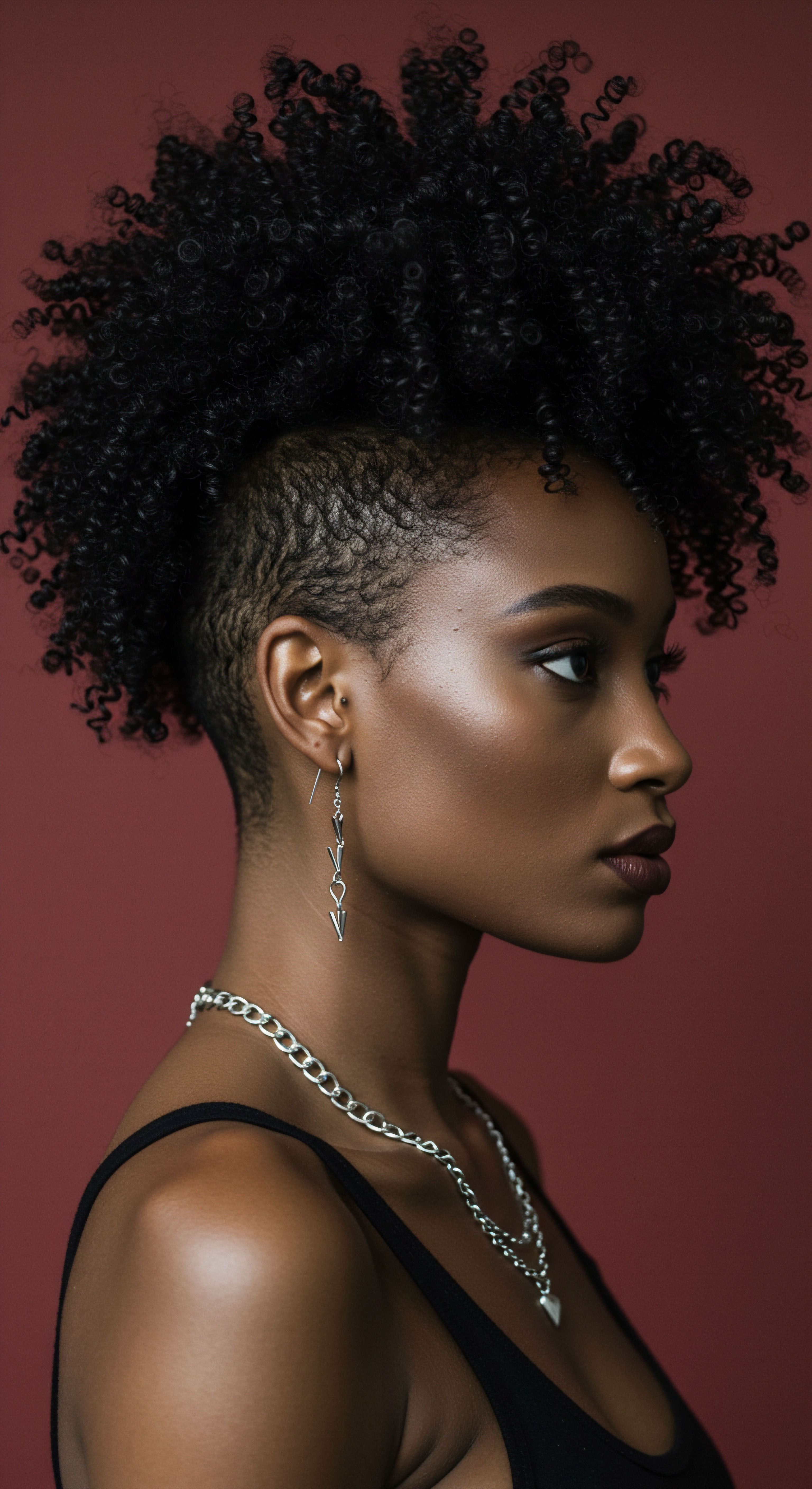
Cotton The Reliable Classic
Cotton, particularly 100% organic cotton, remains a widely recommended material for sensitive skin and scalps. Its natural fibers are soft, breathable, and generally hypoallergenic, making it a staple in clothing and bedding for those prone to irritation. Cotton’s ability to absorb sweat and allow air to flow freely helps prevent overheating and moisture buildup on the scalp, which can reduce irritation and itchiness.
However, the quality of cotton can vary considerably. Conventional cotton cultivation often involves extensive use of pesticides and harsh chemicals, which can persist in the fabric and potentially irritate highly sensitive skin. Opting for certified organic cotton mitigates this concern, as it is grown without harmful chemicals and processed with gentler methods, ensuring a purer, skin-friendly material.
While cotton offers a smooth texture that reduces friction, some studies suggest that coarser cotton weaves can still generate sufficient friction to cause issues like chafing in certain contexts. Therefore, the weave and finish of cotton fabric are as significant as its fiber composition when considering scalp sensitivity.
| Fiber Type Silk |
| Key Characteristics Smooth protein structure, low friction, moisture-retaining, natural luster |
| Scalp Benefit Minimizes breakage, reduces irritation, maintains hydration |
| Fiber Type Bamboo (Viscose/Lyocell) |
| Key Characteristics Naturally round fibers, antimicrobial, highly breathable, moisture-wicking |
| Scalp Benefit Reduces bacterial growth, prevents dampness, less friction |
| Fiber Type Organic Cotton |
| Key Characteristics Soft, breathable, hypoallergenic, absorbent, chemical-free processing |
| Scalp Benefit Allows air circulation, reduces irritation, absorbs sweat |
| Fiber Type Tencel (Lyocell) |
| Key Characteristics Smooth, derived from wood pulp, moisture-regulating, soft |
| Scalp Benefit Gentle contact, aids in temperature control, reduces irritation |
| Fiber Type These natural fibers generally offer superior comfort for sensitive scalps compared to many synthetics. |
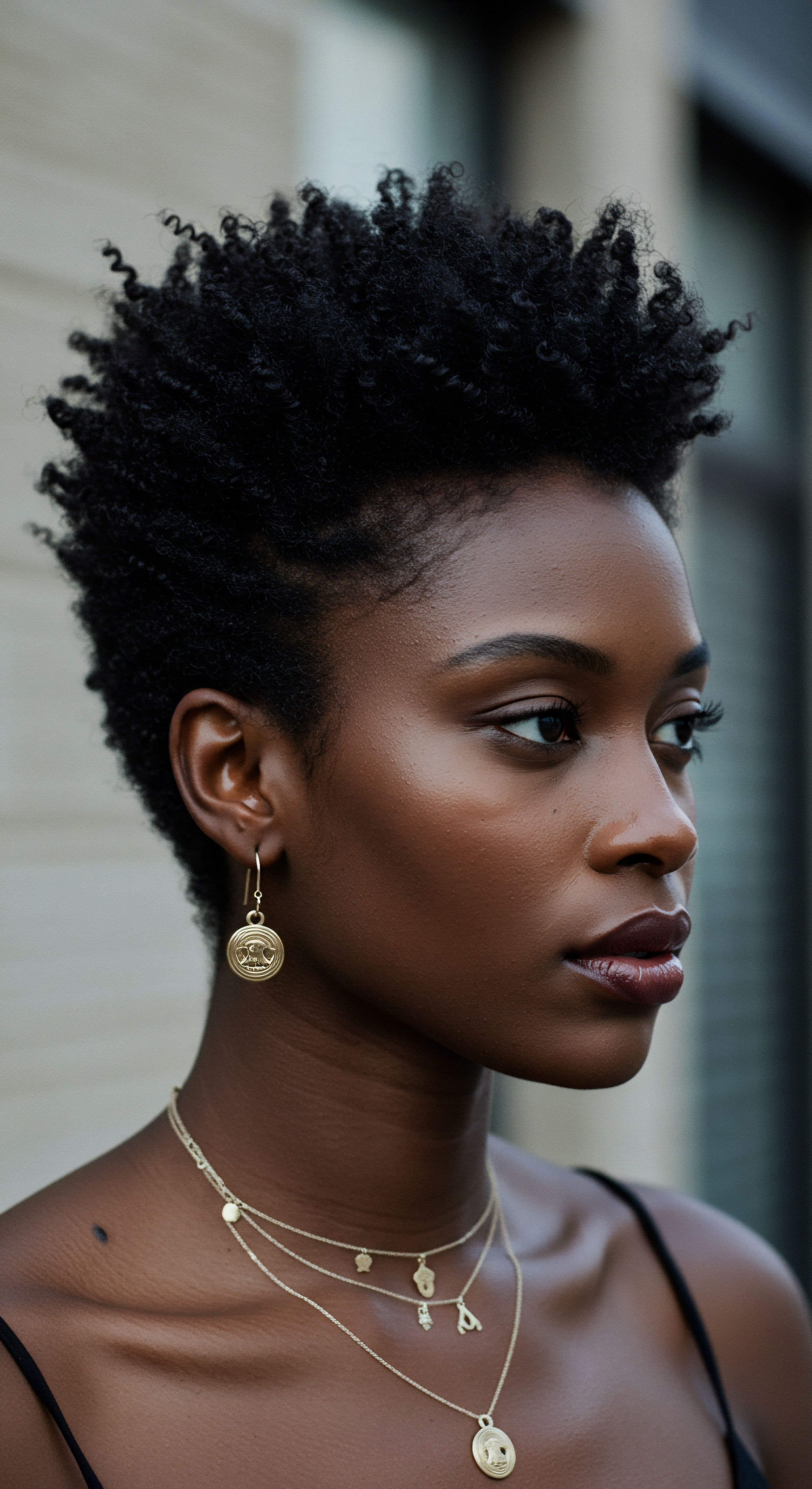
Ritual
The journey toward a soothed scalp is not merely about identifying gentle materials; it is about weaving them into the daily and nightly practices that define our hair care. The ritual of tending to our hair, particularly for those with textured strands, holds a profound connection to self-care and heritage. It is in these moments—from the gentle placement of a head covering to the soft embrace of a pillow—that the chosen material truly shows its mettle. How we interact with our hair and scalp, especially during prolonged contact, significantly influences its health and comfort.
The practical application of these soft fibers transforms theoretical understanding into tangible relief. Consider the delicate balance required to protect textured hair, which is inherently prone to dryness and breakage due to its unique structure. The external environment, coupled with the friction from everyday materials, can disrupt the scalp’s equilibrium, leading to discomfort. Incorporating materials known for their gentle touch becomes a cornerstone of a truly nurturing regimen.
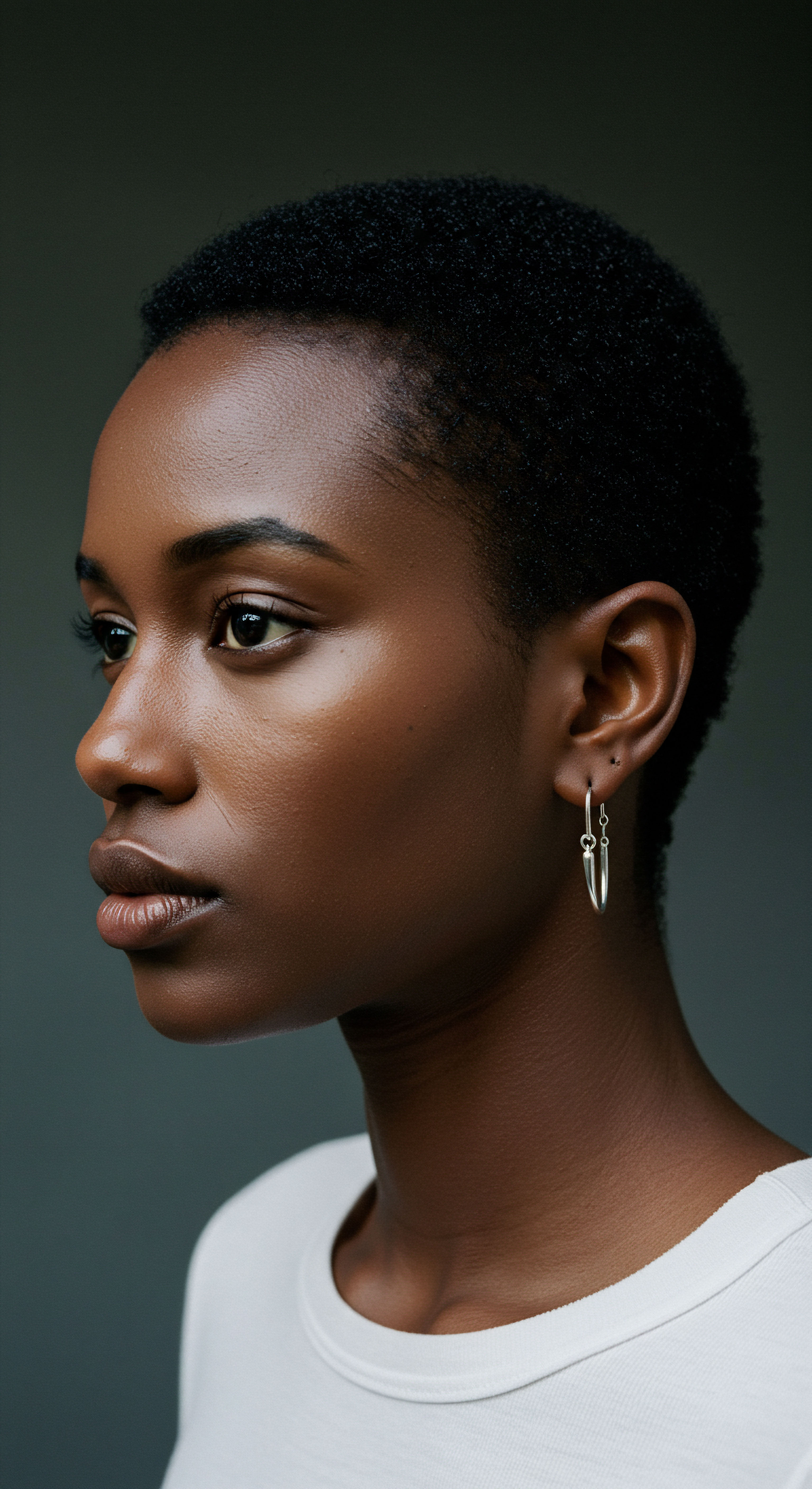
How Do Materials Aid Nighttime Scalp Protection?
Nighttime offers a crucial window for scalp and hair rejuvenation, yet it is also a period when friction from bedding can cause significant stress. The constant rubbing against pillowcases can lead to hair breakage, frizz, and scalp irritation, particularly for those with sensitive skin or delicate hair textures. This is where the thoughtful selection of materials becomes a transformative ritual.
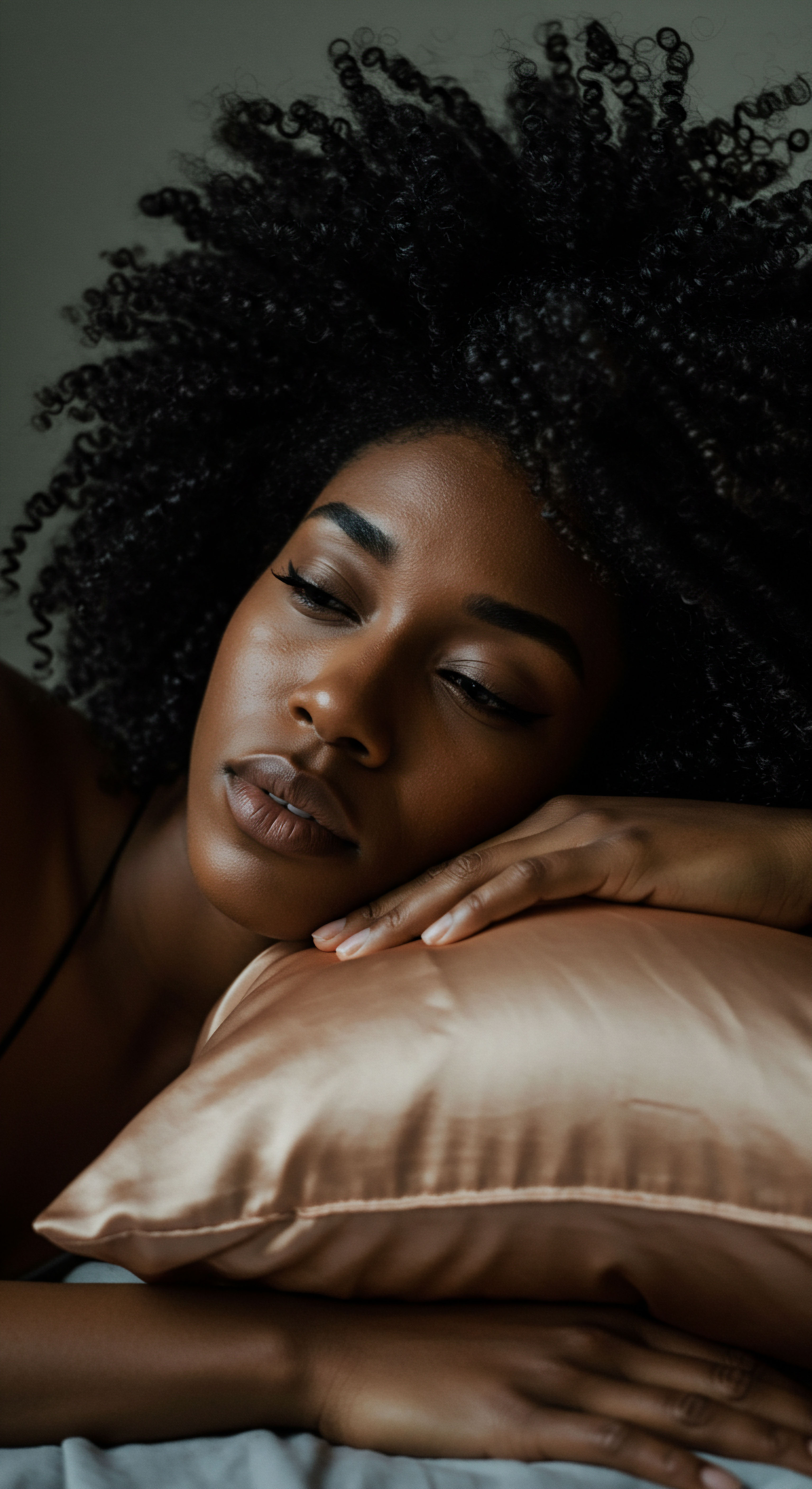
The Bonnet and Pillowcase Sanctuary
For generations, bonnets and head wraps have served as protective shields during sleep, a practice deeply rooted in various cultures, especially within Black communities. These coverings act as a barrier, reducing friction between hair and absorbent bedding materials, thereby preserving moisture and minimizing breakage. When these essential tools are crafted from the softest materials, their protective qualities are amplified.
Silk Bonnets and Silk Pillowcases stand as prime examples of this synergy between material and ritual. The exceptionally smooth surface of silk allows hair to glide effortlessly, preventing the snagging and pulling that coarser fabrics can inflict. This low friction environment is particularly beneficial for sensitive scalps, as it reduces the mechanical stress that can lead to irritation or exacerbate existing conditions. Furthermore, silk is less absorbent than cotton, meaning it helps strands retain their natural oils and applied moisture, contributing to a hydrated scalp and less dry, brittle hair upon waking.
Nighttime rituals with gentle materials can transform scalp protection into a profound act of care.
Similarly, Bamboo Pillowcases and sleep caps offer comparable advantages. Their smooth, round fibers and excellent moisture-wicking properties ensure a dry and comfortable sleep environment, which is vital for preventing microbial buildup and irritation on sensitive scalps. The inherent hypoallergenic nature of bamboo also means fewer potential triggers for allergic reactions during prolonged contact.
Consider the daily act of tying a headscarf or wearing a wig. The material that rests against the scalp beneath these styles plays a significant role in comfort and health. Choosing soft, breathable liners made from silk or bamboo can mitigate the potential for friction and heat entrapment, offering a layer of gentle protection throughout the day.
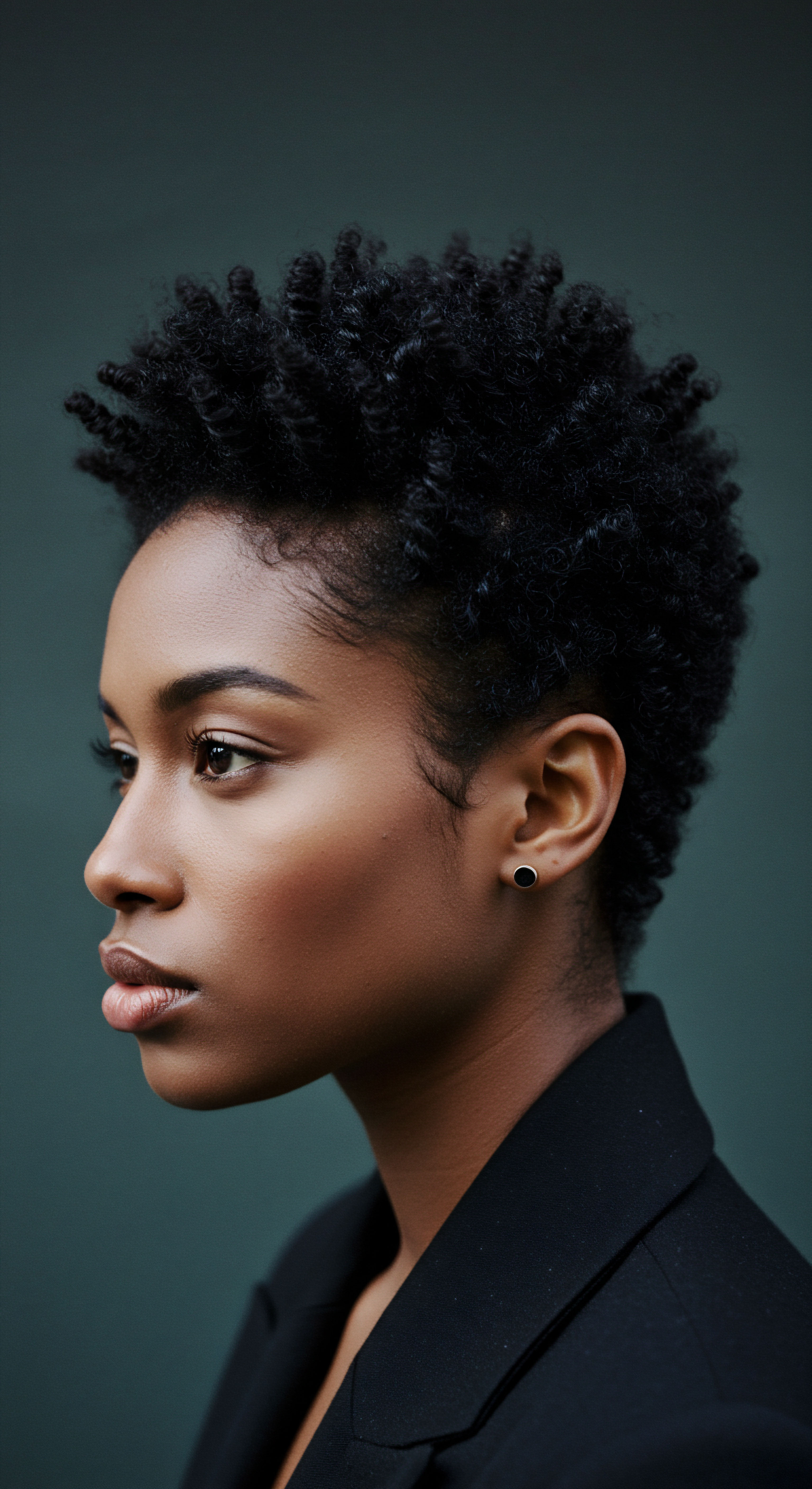
Addressing Friction and Its Impact on Scalp Health
Friction, while seemingly minor, exerts a considerable influence on scalp health. The constant rubbing of hair against fabrics can lead to micro-abrasions on the scalp, cuticle damage on hair strands, and a disruption of the scalp’s protective barrier. This is especially pertinent for individuals with fine or fragile hair, and those with a predisposition to scalp sensitivity.
A study investigating the friction properties of human skin against various textiles revealed that different fabrics exhibit varying coefficients of friction. For instance, wool generally produced a higher coefficient of friction compared to polyamide-based fabrics. While these studies often focus on body skin, the principles extend to the scalp, where constant rubbing from head coverings or bedding can lead to similar mechanical stress.
When the scalp’s barrier function is compromised by excessive friction, it becomes more susceptible to external irritants and microbial imbalances. Symptoms such as itching, redness, and flaking can emerge or worsen. Therefore, the ritual of selecting materials with inherently low friction is not merely a preference for softness, but a strategic decision for scalp wellness.
- Reduce Mechanical Stress ❉ Silk’s ultra-smooth surface allows hair and scalp to glide, minimizing pulling and snagging.
- Preserve Natural Moisture ❉ Bamboo and Silk are less absorbent than traditional cotton, helping the scalp retain its essential oils and hydration.
- Maintain Airflow ❉ Breathable materials like bamboo and organic cotton prevent heat and moisture accumulation, discouraging microbial growth.
This thoughtful approach to material selection, particularly for items in direct, prolonged contact with the scalp, elevates everyday practices into a regimen of intentional care. It acknowledges that true scalp serenity is found not just in products, but in the very fibers that cradle our crowns.
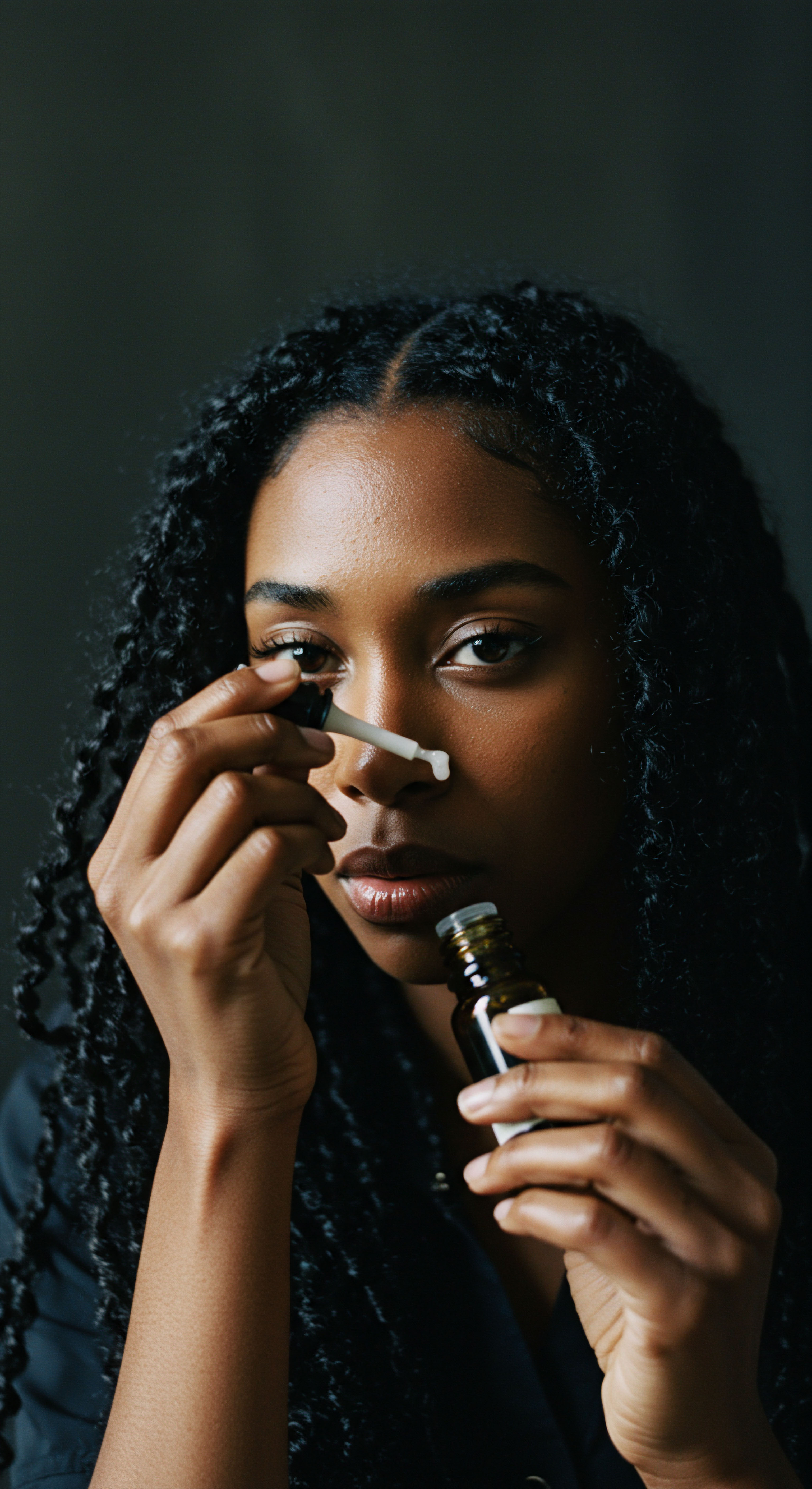
Relay
Beyond the tactile comfort and established rituals, the question of the softest material for sensitive scalps unravels into a complex interplay of scientific understanding, cultural resonance, and individual biological responses. It prompts a deeper inquiry ❉ how do the subtle characteristics of textiles influence the very ecosystem of our scalp, and what lessons can we glean from both modern research and enduring traditions? This exploration transcends surface-level observations, delving into the intricate connections between fiber, skin biology, and lived experience.
The scalp, a dynamic micro-environment, hosts a diverse community of microorganisms—its microbiome—which plays a significant part in maintaining its health. The materials that come into prolonged contact with the scalp can directly influence this delicate balance. Understanding this interaction, coupled with the insights from dermatological studies and cultural practices surrounding head coverings, provides a more complete picture of true scalp comfort.
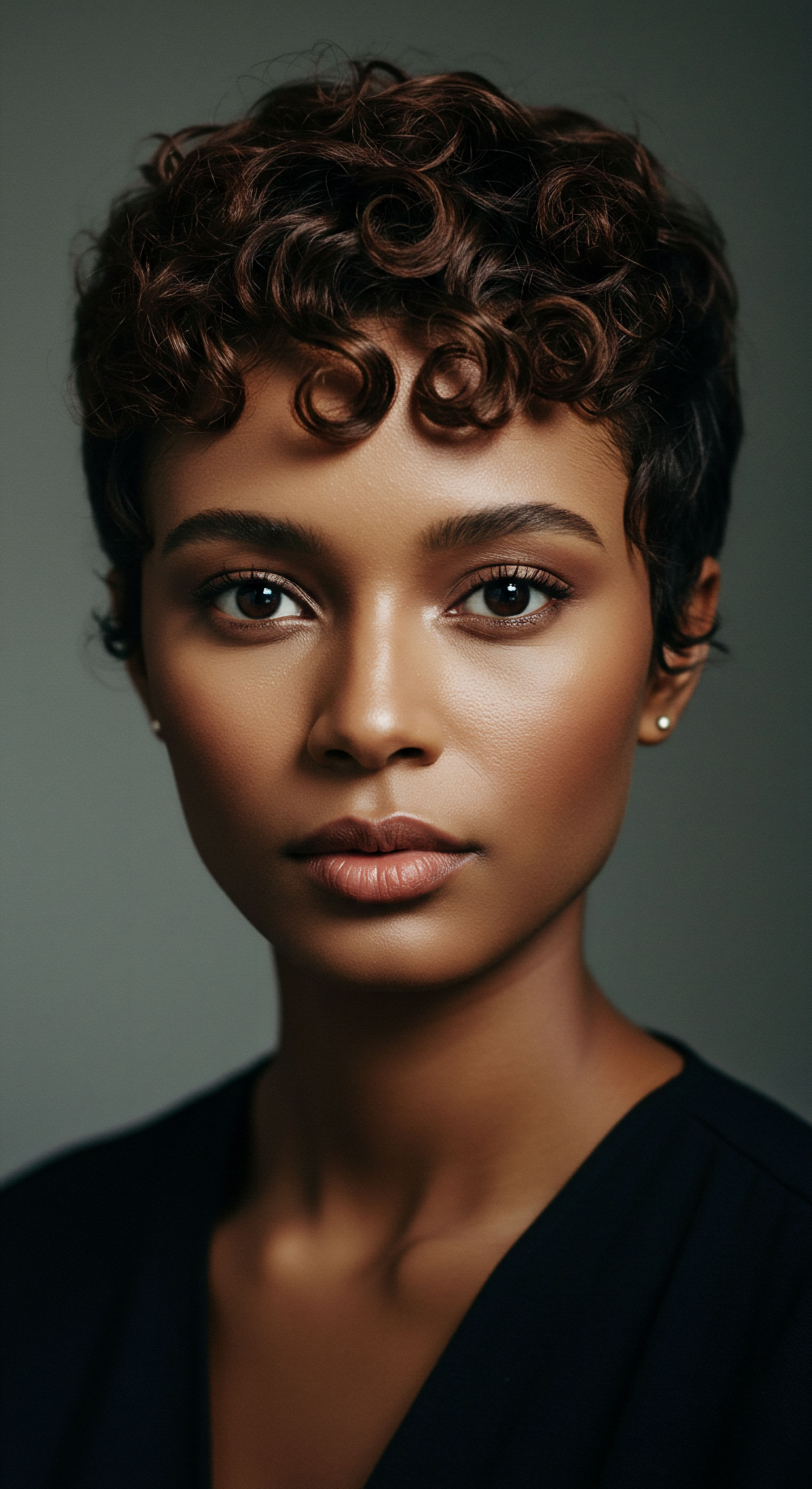
Do Fabric Choices Influence Scalp Microbiome Balance?
The human skin microbiome, including that of the scalp, is a complex habitat where billions of microorganisms reside. The equilibrium of these microbial communities is crucial for healthy skin. When textiles interact with the skin, they offer an opportunity for bacteria to adhere to their surfaces, potentially fostering the growth of specific strains. This interaction can be particularly relevant for sensitive scalps, where a disrupted microbiome might contribute to irritation, itching, or flaking.
Antimicrobial treatments, often used in conventional fabrics, can disrupt this delicate microbial balance, potentially increasing skin sensitivity. This highlights a compelling reason to favor natural fibers that are either inherently antimicrobial, like bamboo with its “bamboo kun” agent, or those that simply do not interfere with the skin’s natural processes. The shift towards “skin microbiome-gentle” products in the beauty industry extends to textiles, recognizing that materials in direct contact with the body should work in harmony with its natural defenses. Research is even exploring the integration of encapsulated probiotic bacteria into clothing fibers to enhance skin health, a fascinating glimpse into the future of textile innovation.
The fabric touching your scalp subtly shapes its microbial world, underscoring the importance of gentle, microbiome-friendly choices.
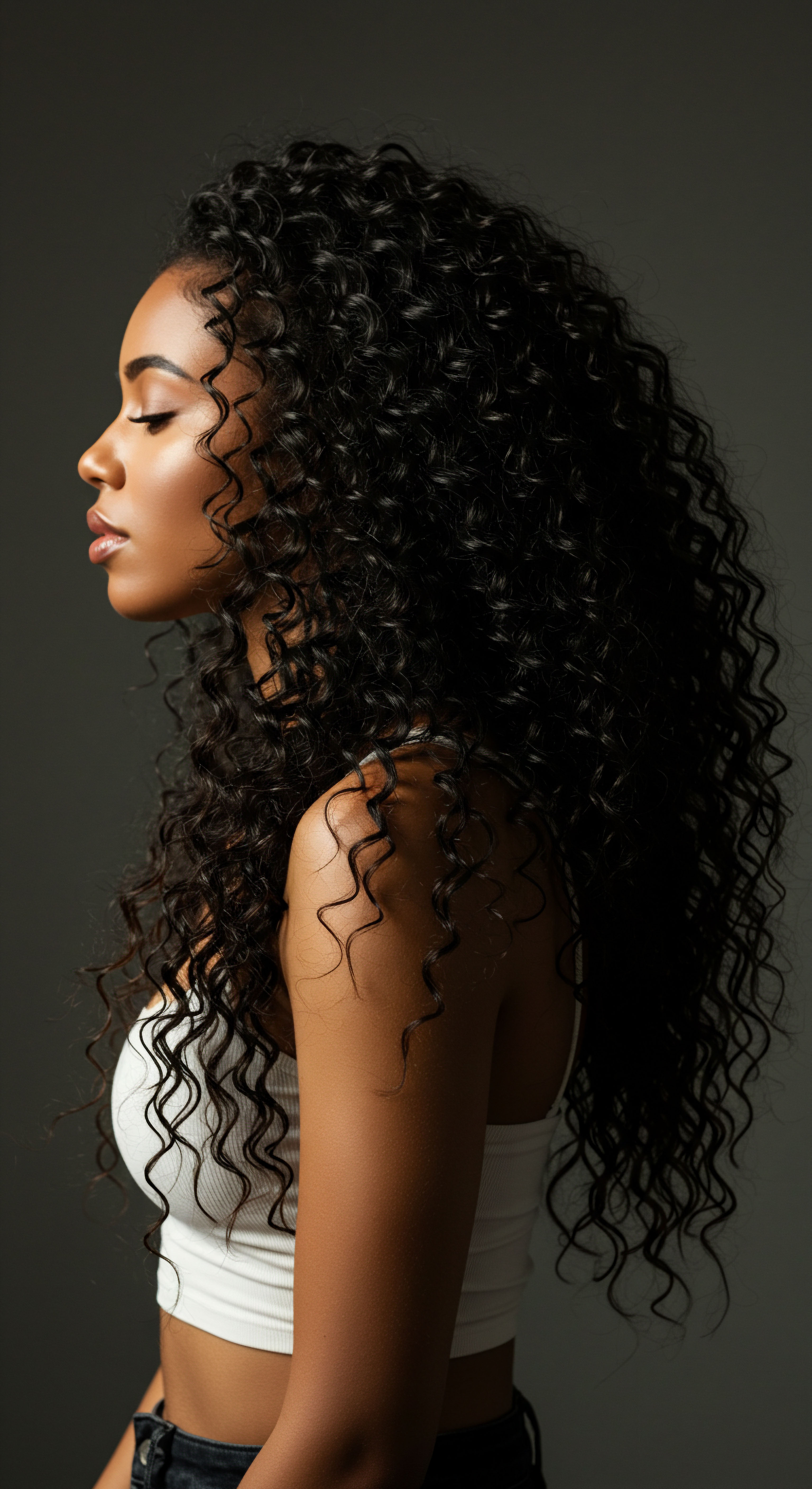
Unpacking Scalp Sensitivity and Hair Protection in Cultural Contexts
The practice of covering hair, whether for cultural, religious, or aesthetic reasons, is ancient and widespread. While these coverings offer protection from elements and hold deep symbolic meaning, their materials and styling methods can sometimes inadvertently contribute to scalp issues, particularly for those with certain hair textures.
A significant consideration for individuals with textured hair, such as afro-textured hair, is the propensity for traction alopecia. This condition, characterized by hair loss due to repetitive pulling or tension on the hair follicles, can be exacerbated by tight hairstyles or head coverings. A review published in the International Journal of Women’s Dermatology highlighted that “traction is a likely contributor to hijab-related alopecia, owing to the consistent and tight wrapping of the hijab around the head and hair, which can lead to continuous pull on the hair roots.” This study further noted that this is “a particularly important consideration for certain subgroups, such as women with afro-textured hair who have fewer elastic fibers attaching hair follicles to the dermis compared to Caucasians”. This critical distinction underscores how biological predispositions interact with cultural practices, necessitating a nuanced approach to material selection.
The choice of fabric for head coverings can mitigate this risk. While the styling tension remains a primary factor, using materials that minimize friction against the scalp and hair can reduce additional stress. For instance, wearing a smooth, low-friction lining, such as silk or bamboo, underneath a more traditional head covering can help protect the hair and scalp from abrasion, even if the outer layer is a coarser material. This thoughtful layering acknowledges both cultural practices and physiological needs, offering a path to honor tradition without compromising scalp health.

Synthetic Fibers Versus Natural Comfort
The modern textile landscape presents a dichotomy between natural and synthetic fibers. While synthetic options like polyester and nylon are often praised for durability and moisture-wicking in athletic wear, their properties can pose challenges for sensitive scalps. These materials can trap heat and moisture against the skin, creating an occlusive environment that encourages bacterial growth and irritation. Furthermore, many synthetic fabrics are treated with harsh chemicals, dyes, and finishing agents that can trigger contact dermatitis, an allergic reaction presenting as redness, itching, and scaling.
In contrast, natural fibers like silk, bamboo, and organic cotton, as discussed, generally offer superior breathability, moisture management, and a lower likelihood of chemical residues, making them inherently more compatible with sensitive skin. Their smooth fiber structures also contribute to reduced friction, which is paramount for preventing mechanical irritation.
The decision between synthetic and natural extends beyond mere softness to encompass the entire interaction with the scalp’s biology. For sensitive scalps, prioritizing natural, minimally processed fibers represents a choice that aligns with the body’s intrinsic needs for balance and gentle care.
| Aspect of Scalp Health Friction |
| Natural Fibers (Silk, Bamboo, Cotton) Generally low, smooth surface reduces abrasion |
| Synthetic Fibers (Nylon, Polyester) Can be higher, leading to mechanical irritation |
| Aspect of Scalp Health Moisture & Breathability |
| Natural Fibers (Silk, Bamboo, Cotton) Excellent wicking, allows air circulation, prevents dampness |
| Synthetic Fibers (Nylon, Polyester) Can trap heat and moisture, leading to occlusion |
| Aspect of Scalp Health Microbiome Impact |
| Natural Fibers (Silk, Bamboo, Cotton) Less disruptive, some (bamboo) are naturally antimicrobial |
| Synthetic Fibers (Nylon, Polyester) Antimicrobial treatments can disrupt natural flora |
| Aspect of Scalp Health Chemical Irritants |
| Natural Fibers (Silk, Bamboo, Cotton) Less likely, especially organic options |
| Synthetic Fibers (Nylon, Polyester) Higher risk from dyes, finishes, processing agents |
| Aspect of Scalp Health Natural fibers generally promote a more balanced and comfortable scalp environment. |

Reflection
The quest for the softest material for sensitive scalps leads us down a path of interconnectedness—between historical wisdom and scientific discovery, between personal well-being and cultural expression. It reveals that true comfort for the scalp is not a singular destination but an ongoing dialogue with our bodies, the materials we choose, and the practices we adopt. From the luxurious caress of silk to the breathable comfort of bamboo, each fiber offers a unique proposition for scalp serenity. Ultimately, the most harmonious choice arises from a mindful consideration of individual needs, an understanding of how materials interact with our delicate biological landscape, and a deep respect for the legacy of hair care traditions that have guided us for centuries.
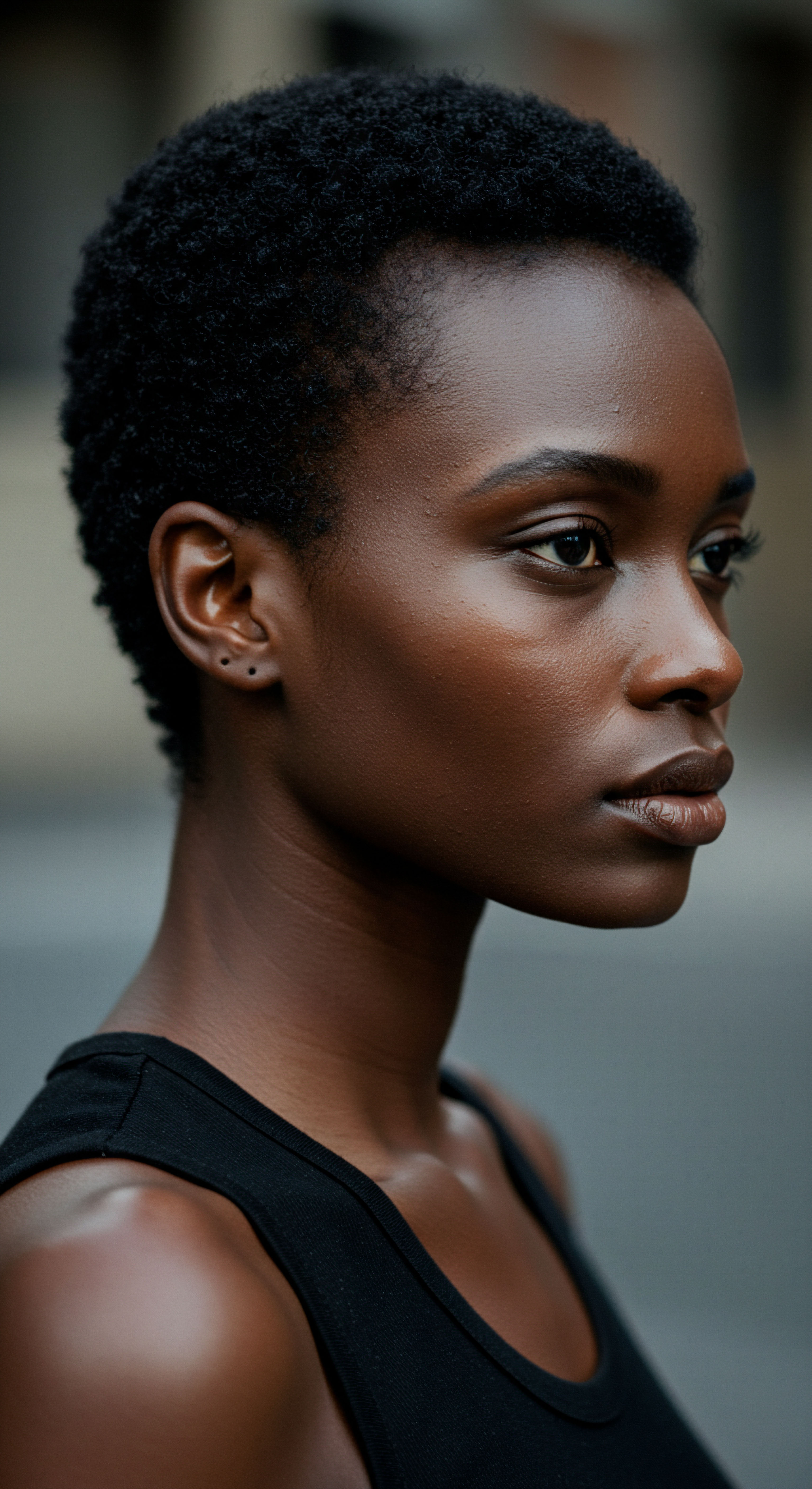
References
- Alhanshali, N. Alshami, M. Alshami, M. & Alshami, M. (2023). Religious headwear and alopecia ❉ considerations for dermatologists. International Journal of Women’s Dermatology, 9(3), e087.
- Broadhead, R. Craeye, L. & Callewaert, C. (2021). The Future of Functional Clothing for an Improved Skin and Textile Microbiome Relationship. Microorganisms, 9(6), 1192.
- Kim, S. Shin, S. Kim, S. & Na, Y. (2021). Understanding the Characteristics of the Scalp for Developing Scalp Care Products. Journal of Cosmetics, Dermatological Sciences and Applications, 11, 204-216.
- Ramalho, A. Morais, L. & Guedes, C. (2022). A Brief Review on Factors Affecting the Tribological Interaction between Human Skin and Different Textile Materials. Journal of Tribology, 2022.
- Sivamani, R. K. & Maibach, H. I. (2010). Textile Contact Dermatitis. CRC Press.
- Sugino, T. & Miyashita, S. (2001). Silk Biomaterials ❉ Medical and Cosmetic Applications. CRC Press.
- Wang, L. & Ma, H. (2020). Biomaterials for Skin Care. Woodhead Publishing.
- Yamada, M. & Tanaka, M. (2001). Moisturizing property of a lotion containing 1% sericin and 4% D-glucose. Journal of the Society of Cosmetic Chemists of Japan, 35(1), 35-41.
- Yoro Naturals. (2024). For Physicians ❉ Remedywear™ ❉ Therapeutic, Soft Clothing for Sensitive Skin Conditions. Retrieved from YoRo Naturals website.
- Zhang, M. & Mak, A. F. (1999). In vivo friction properties of human skin. Prosthetics and Orthotics International, 23(2), 135-141.